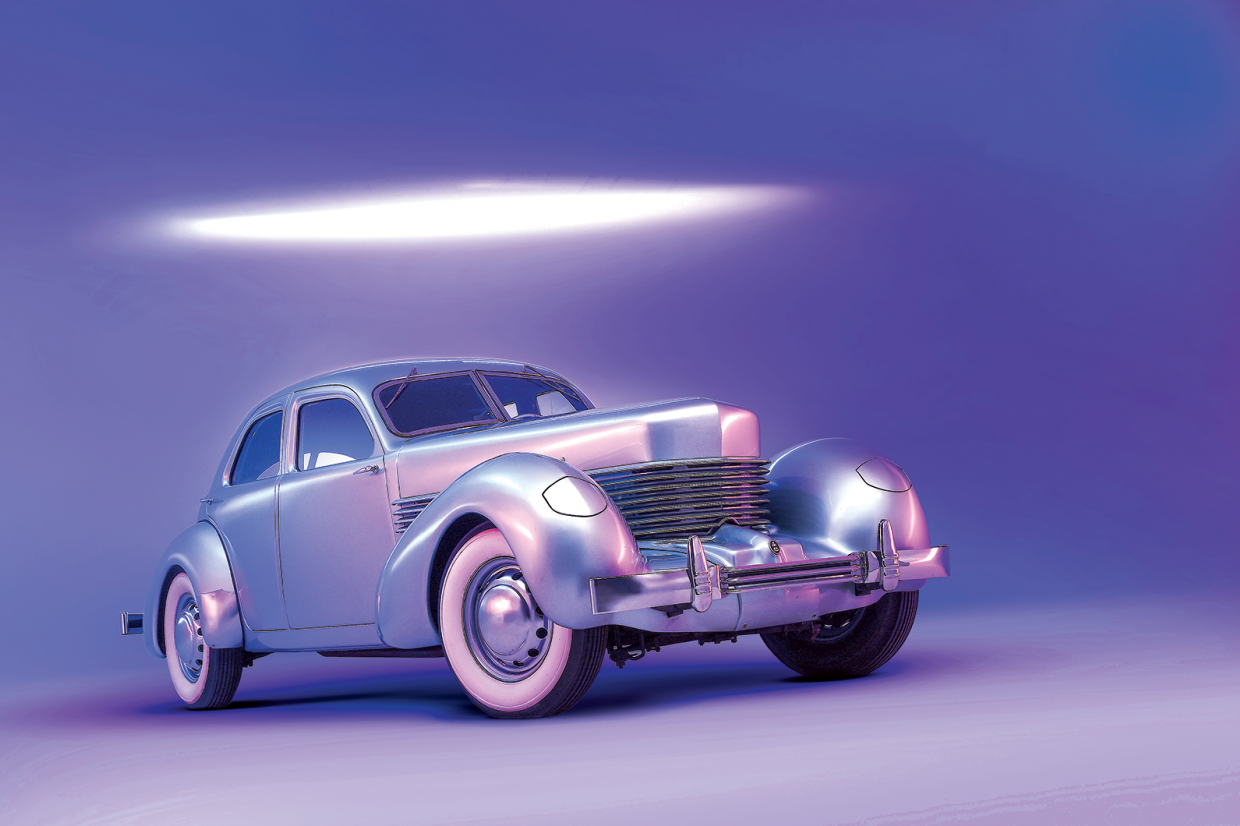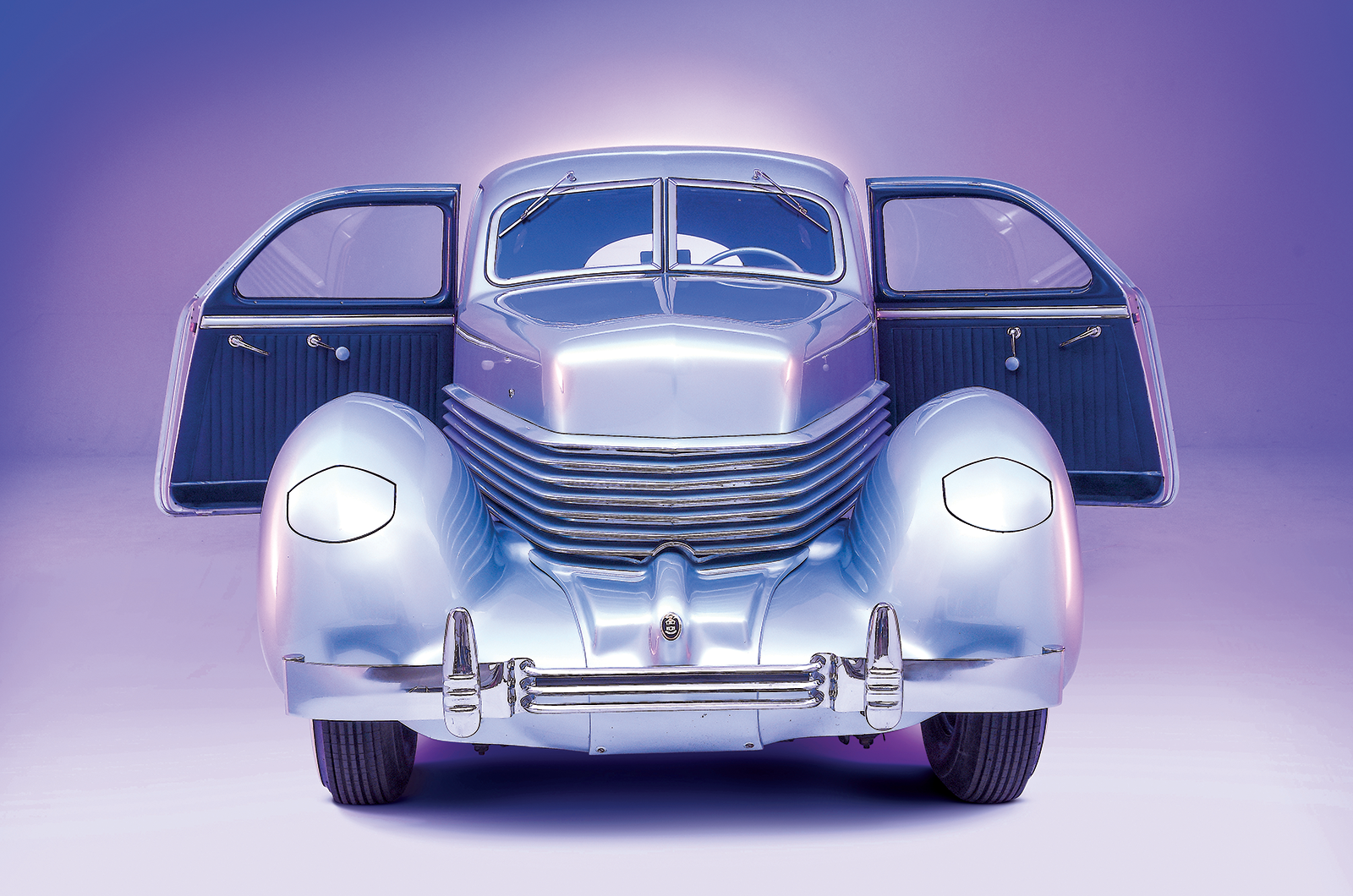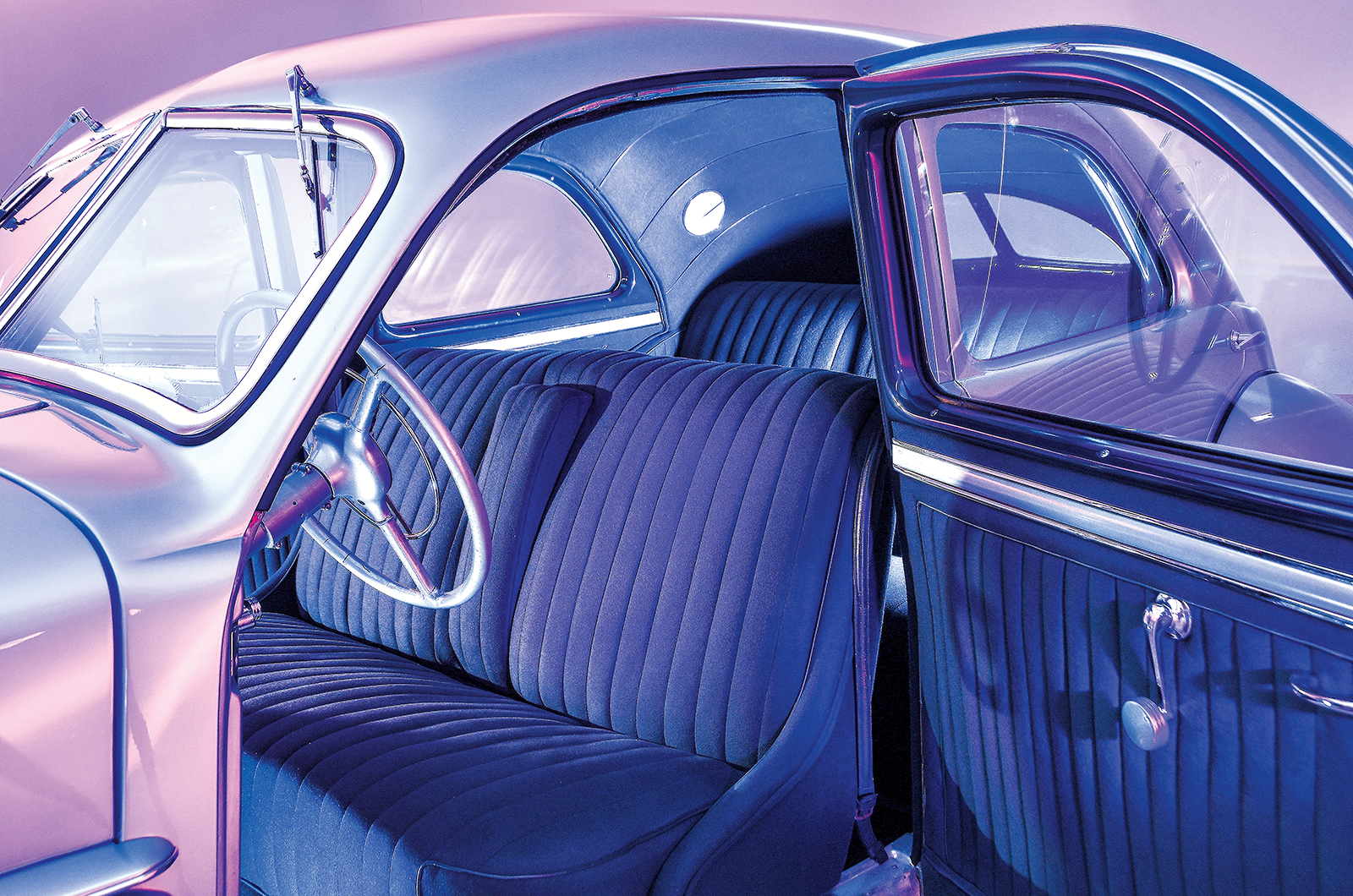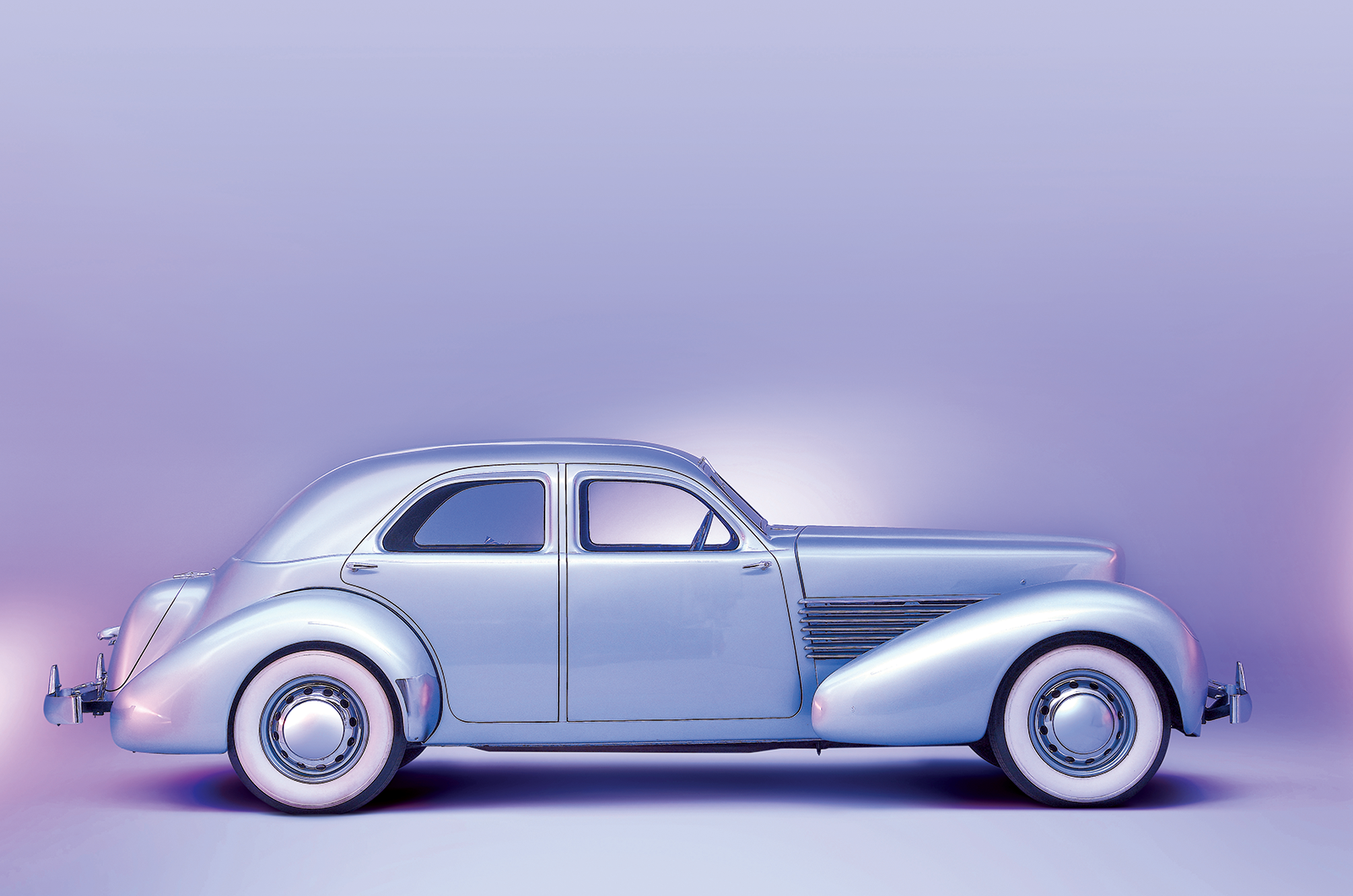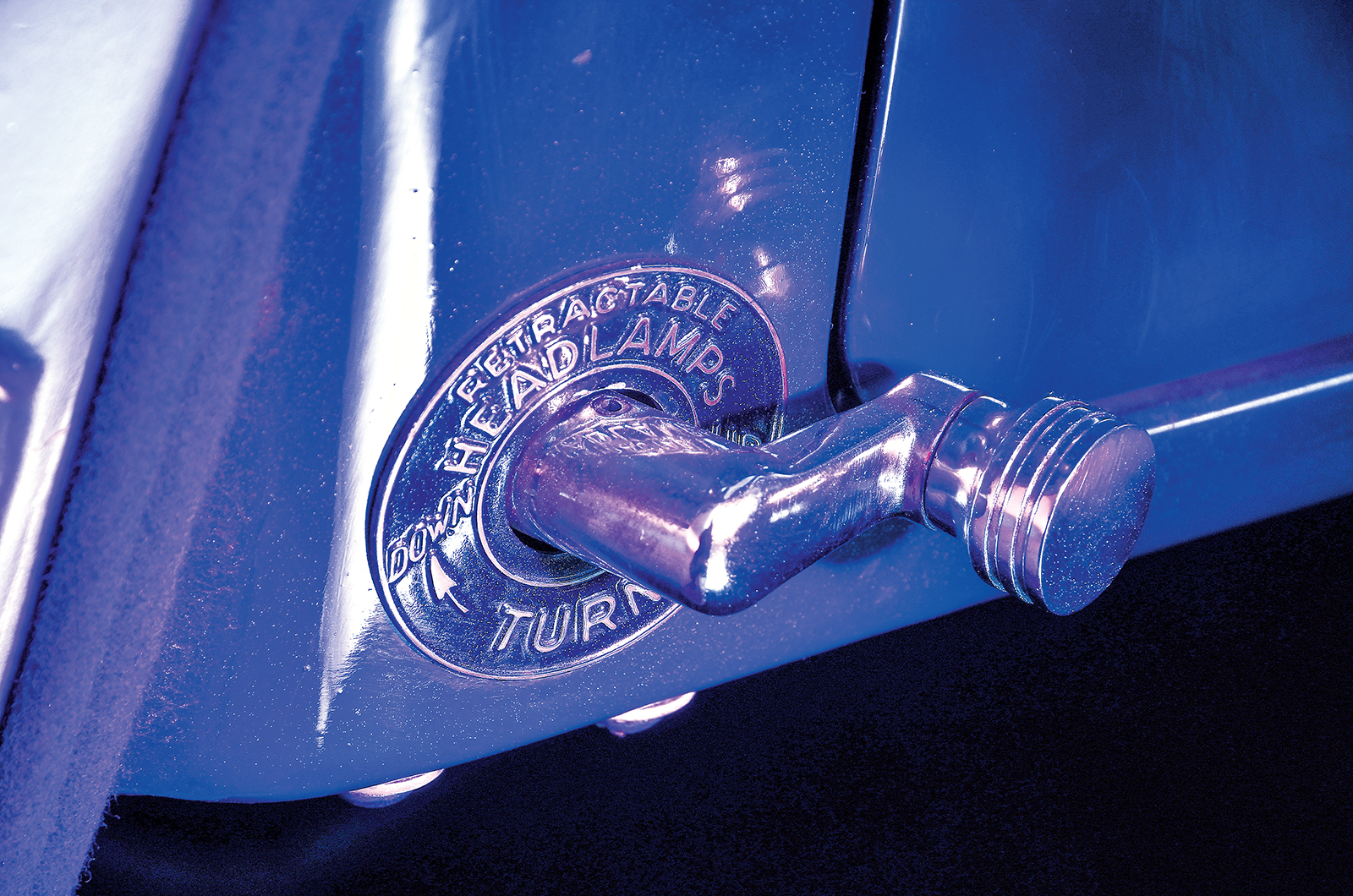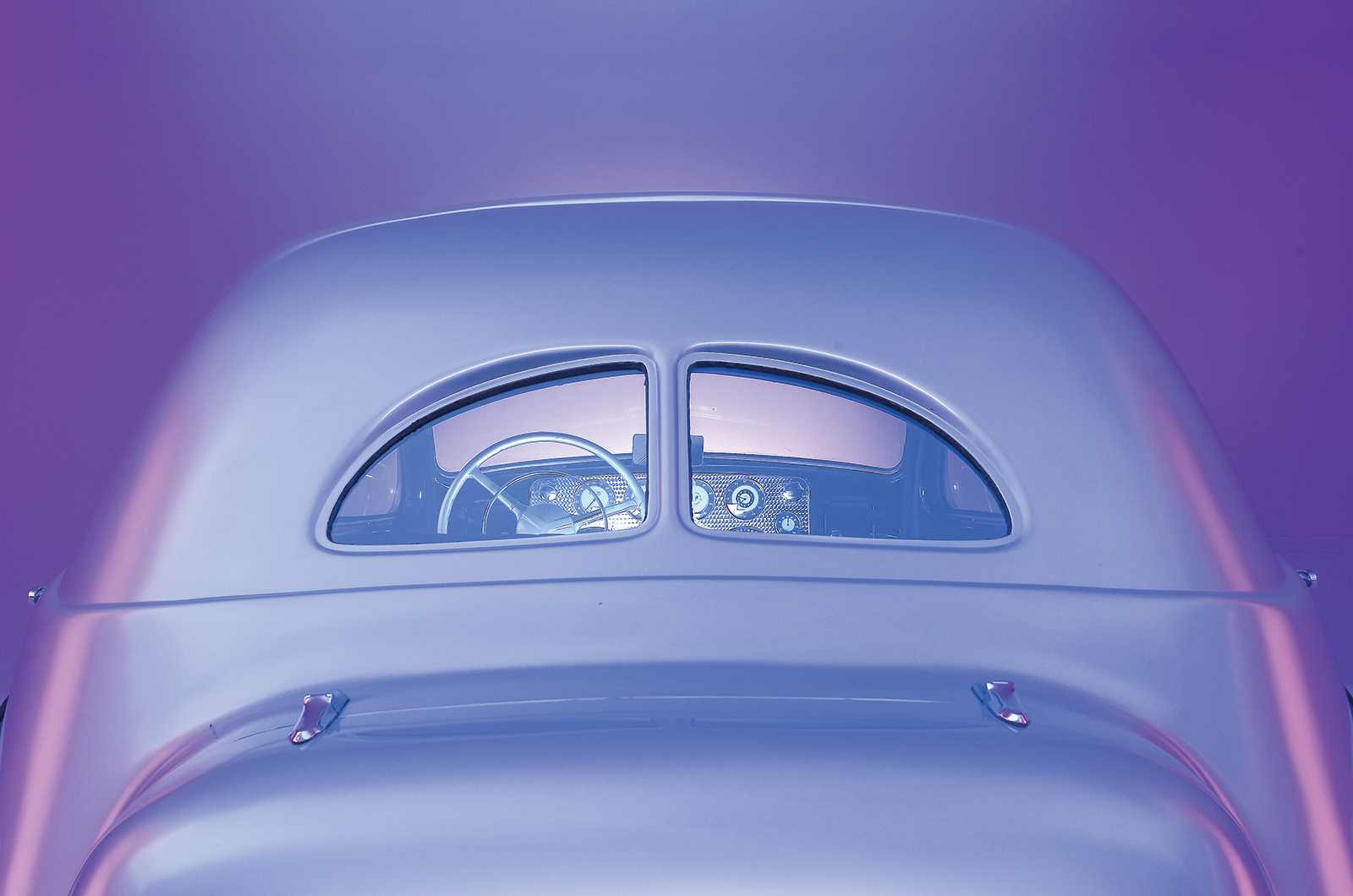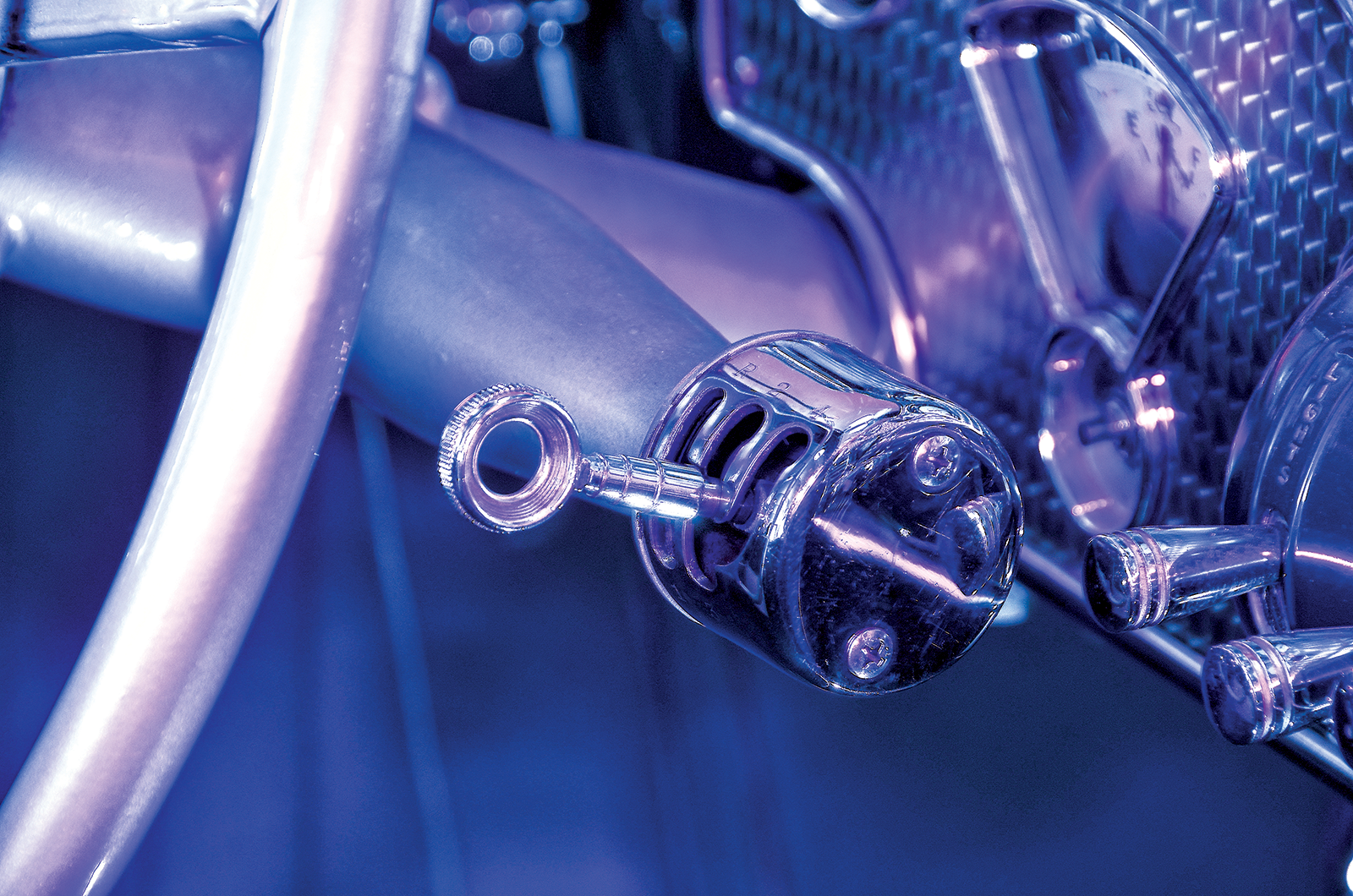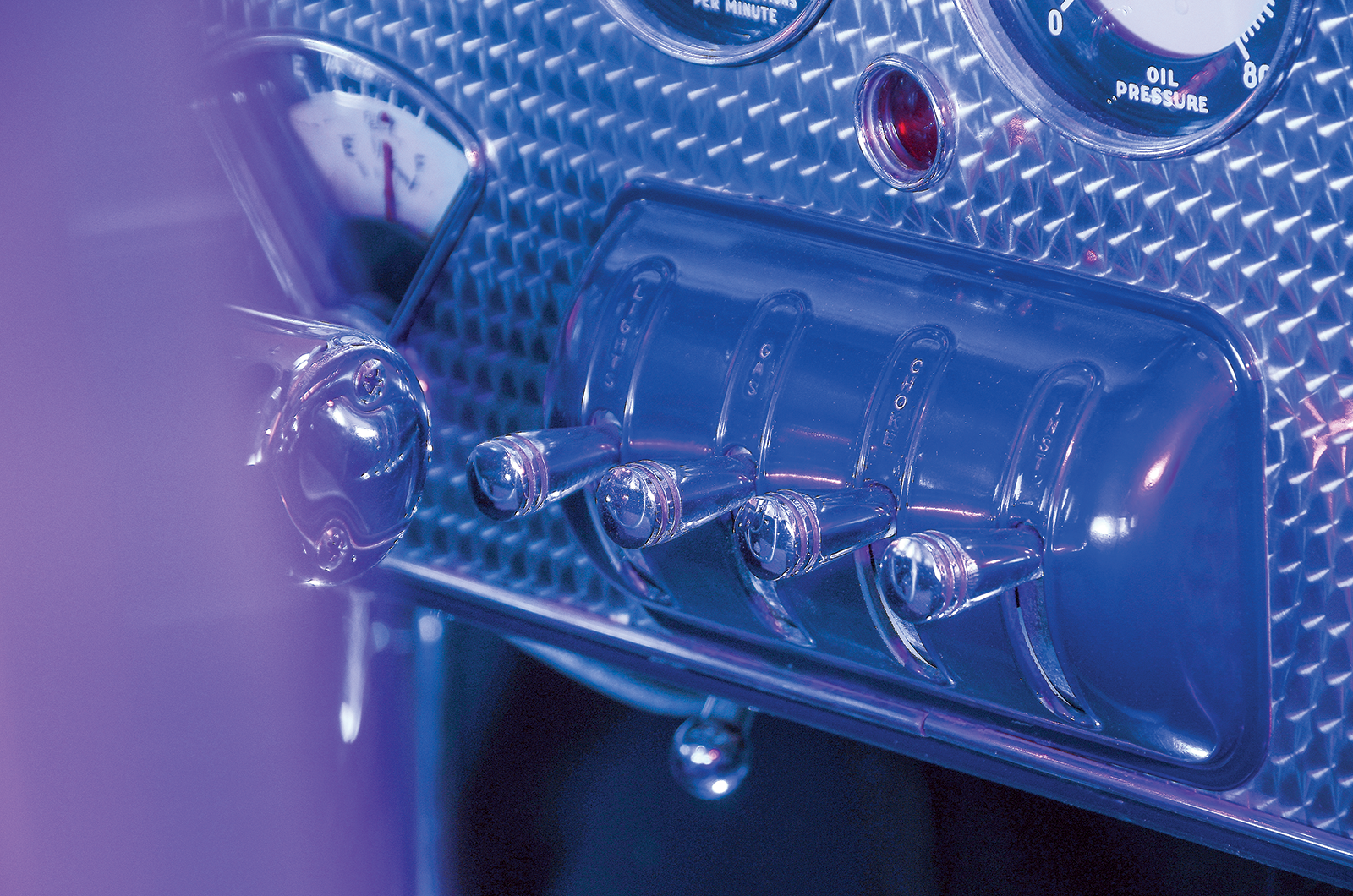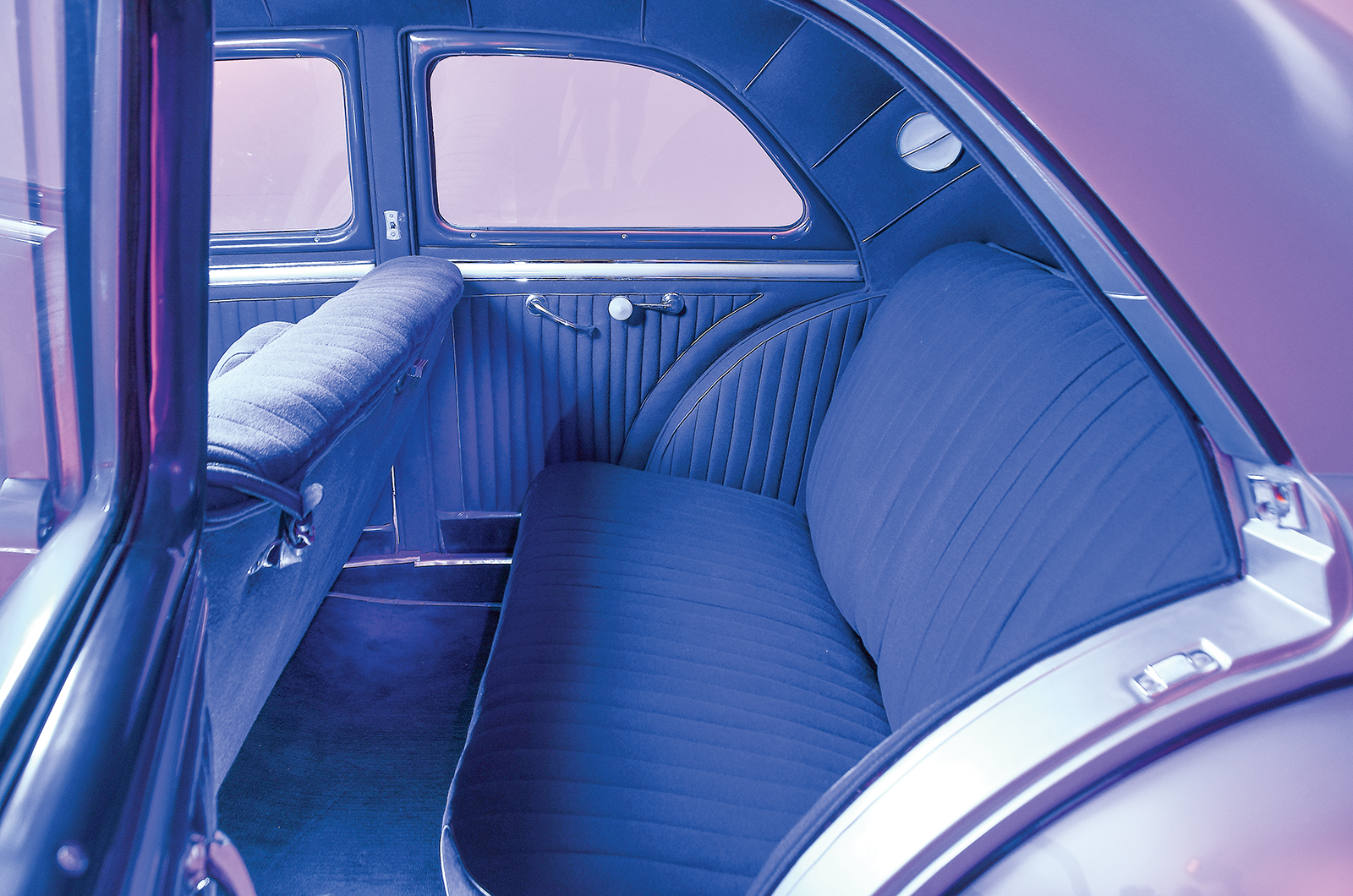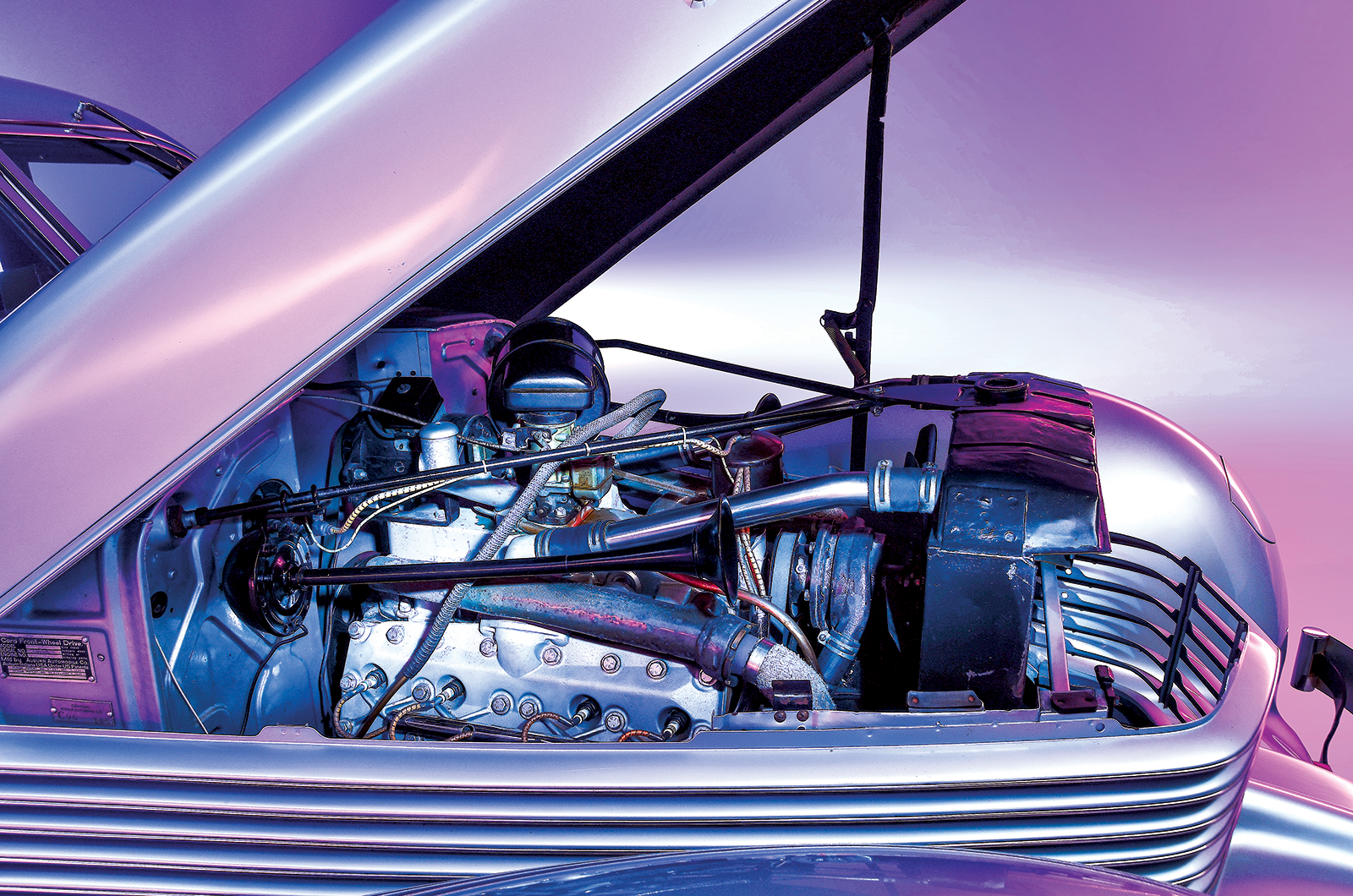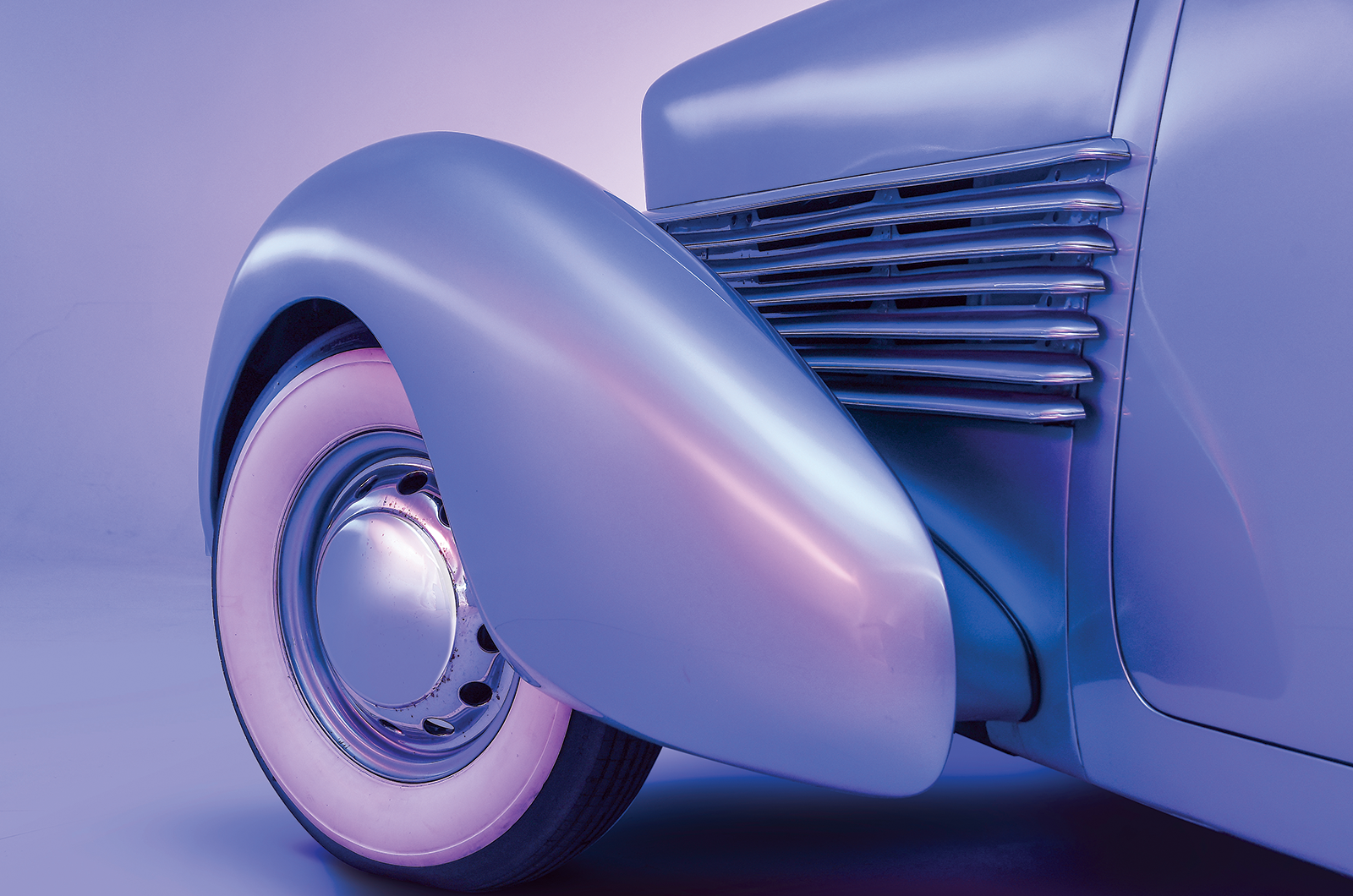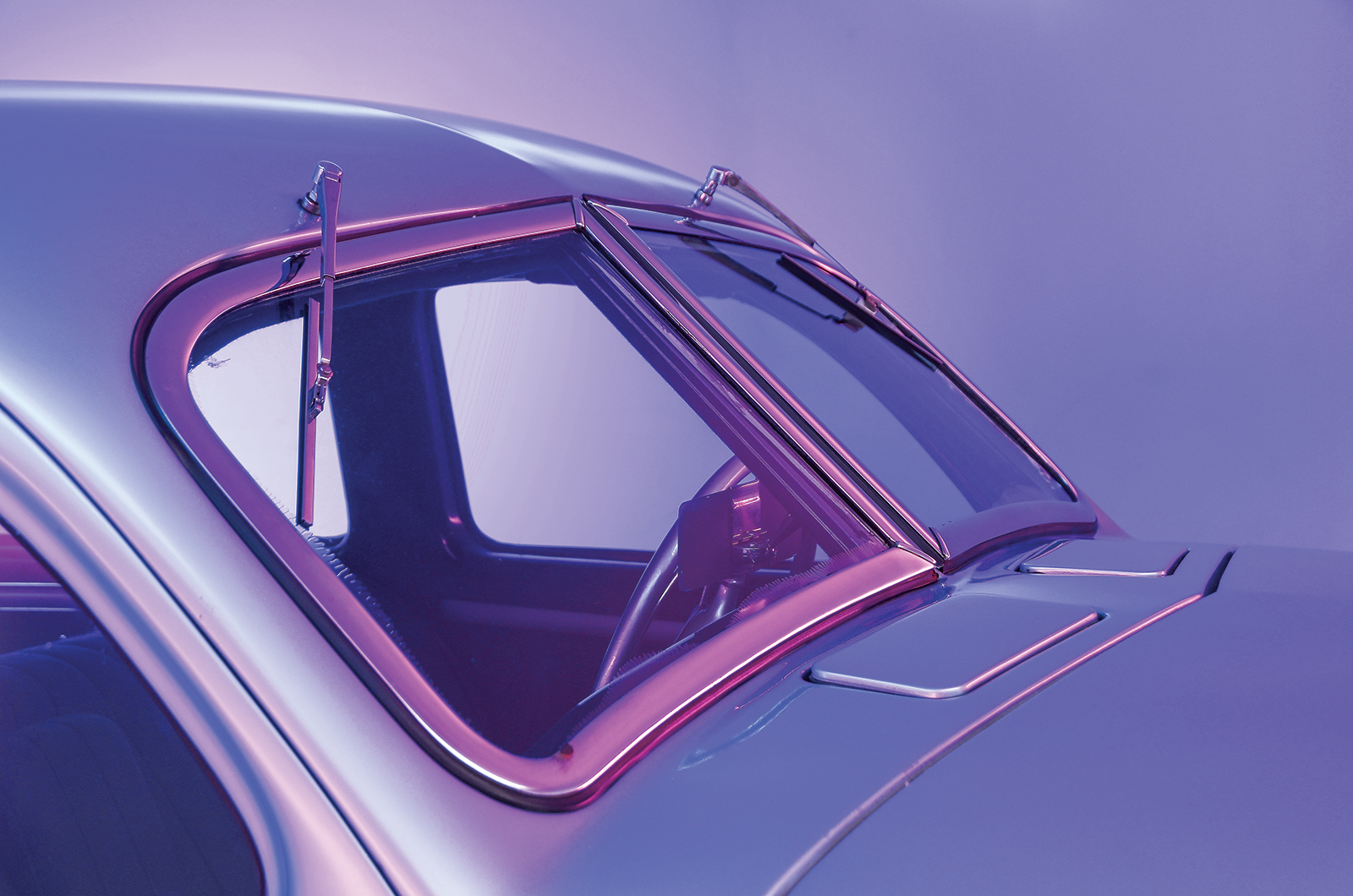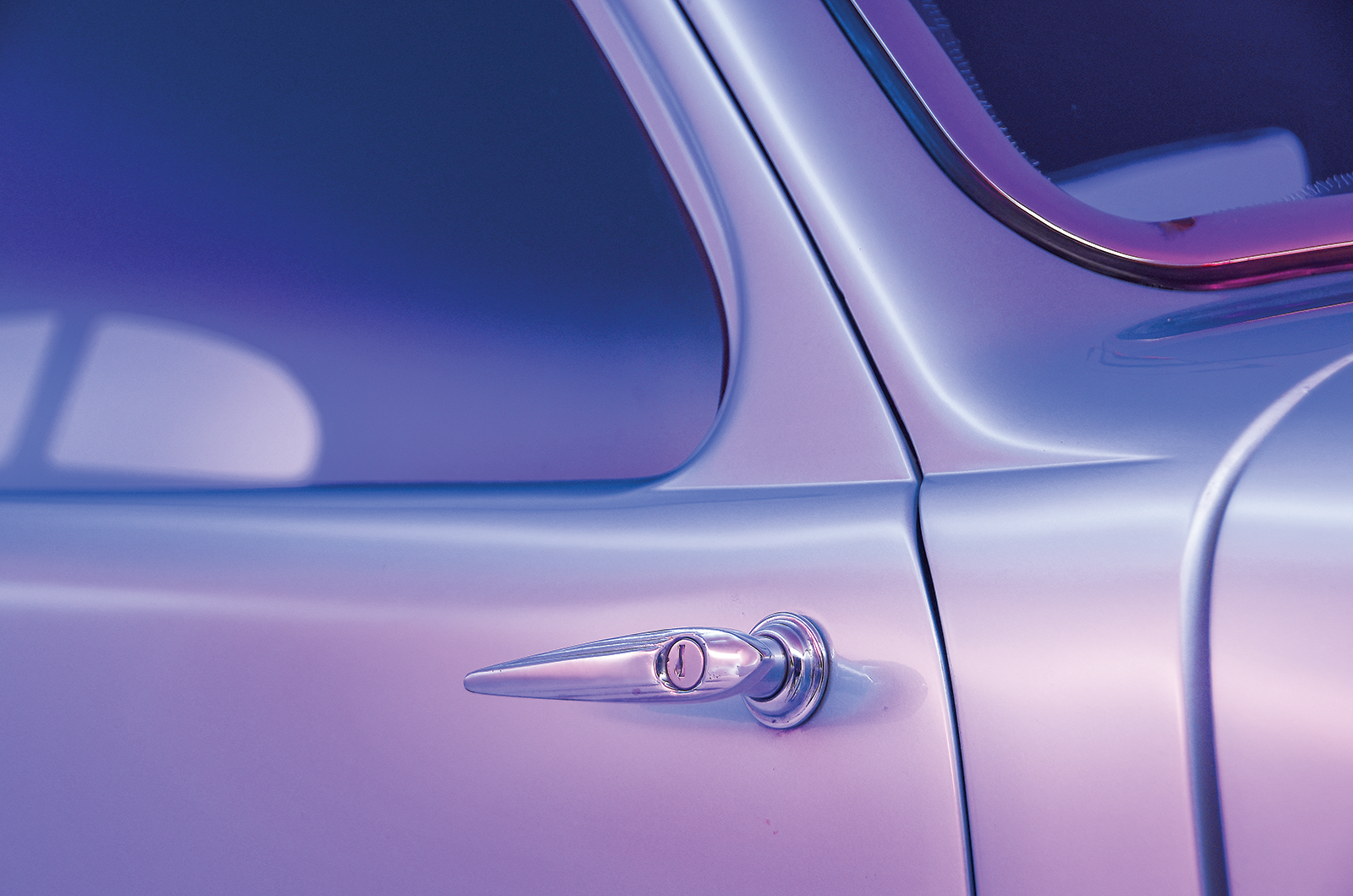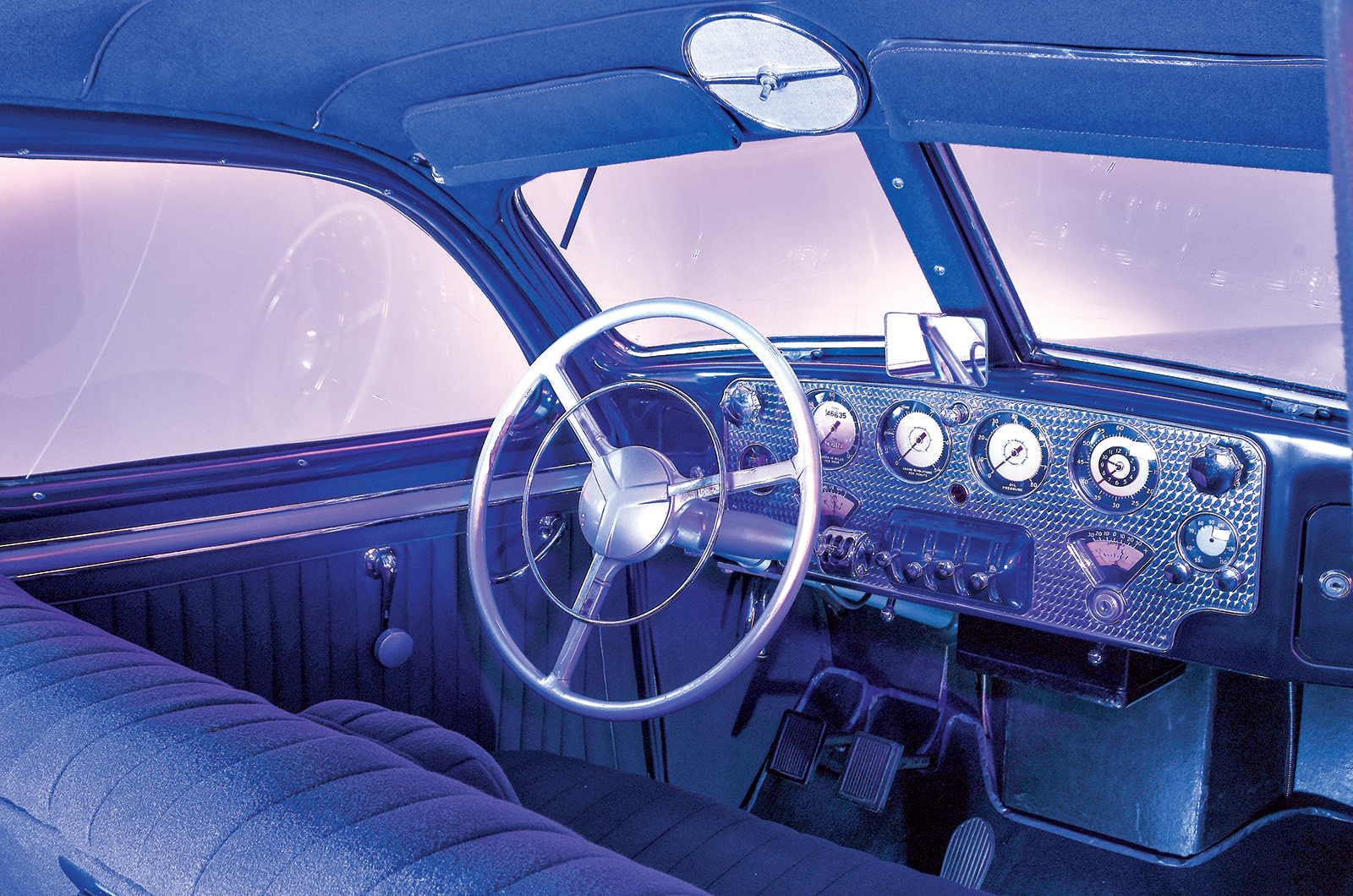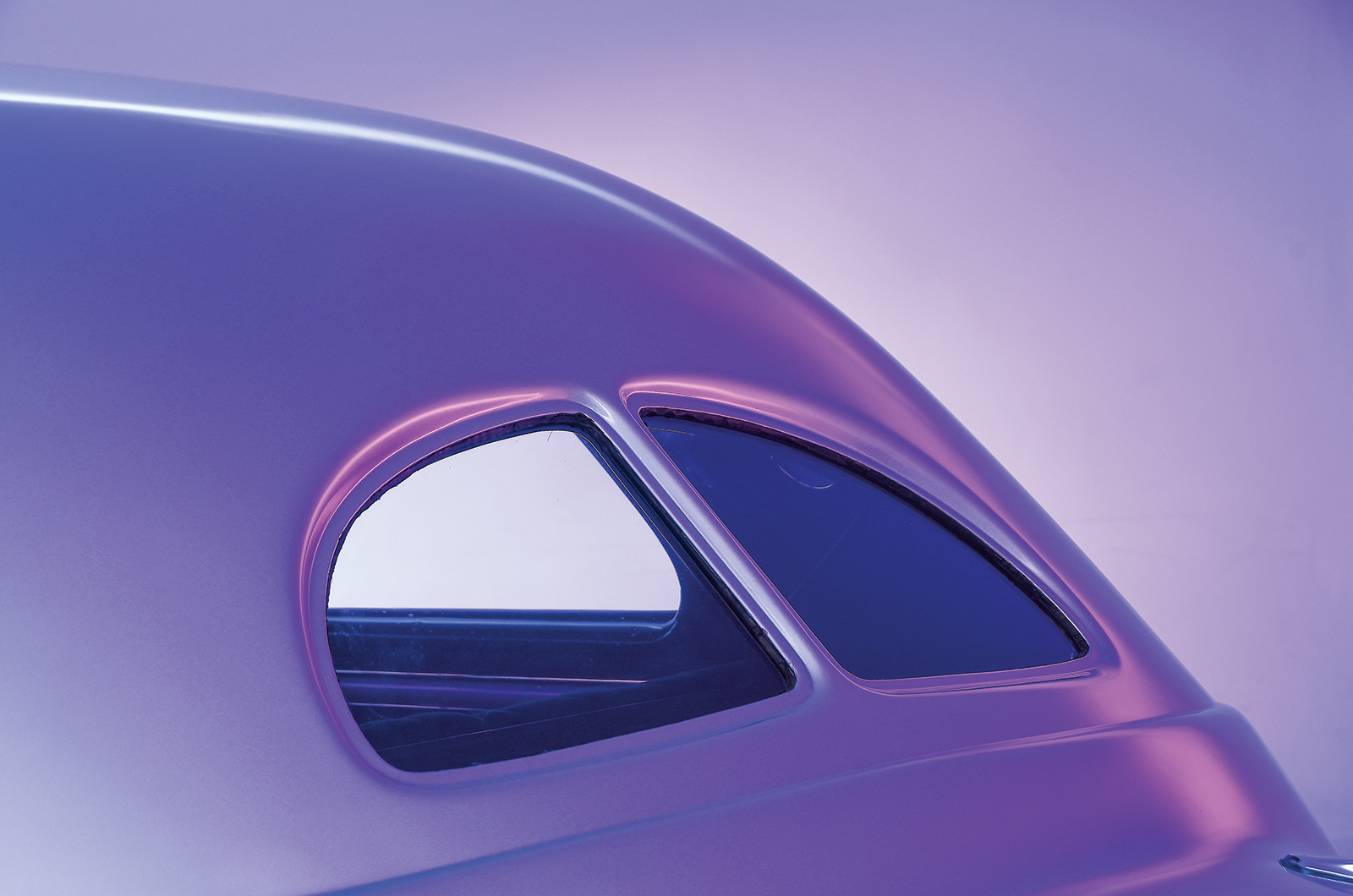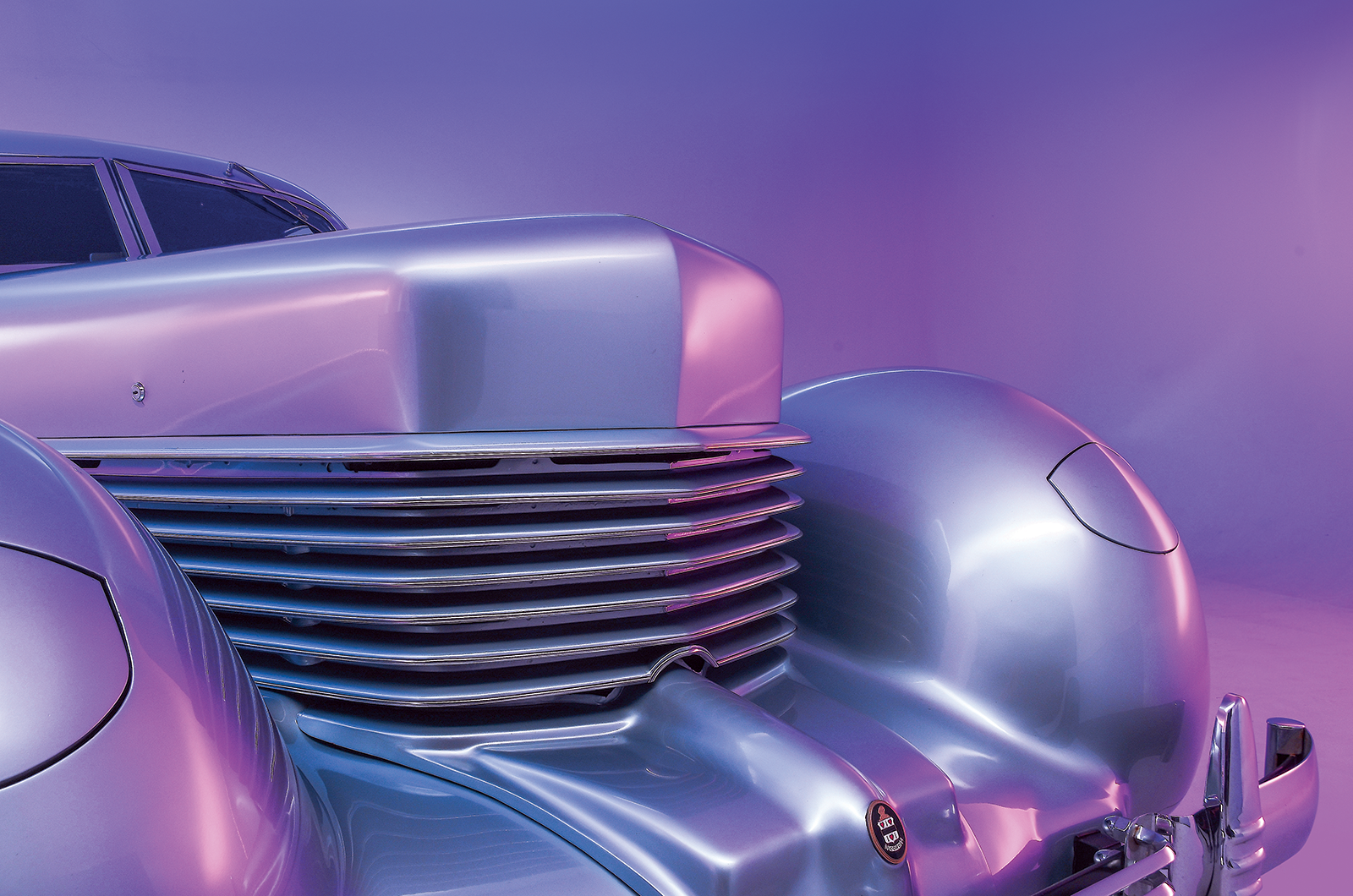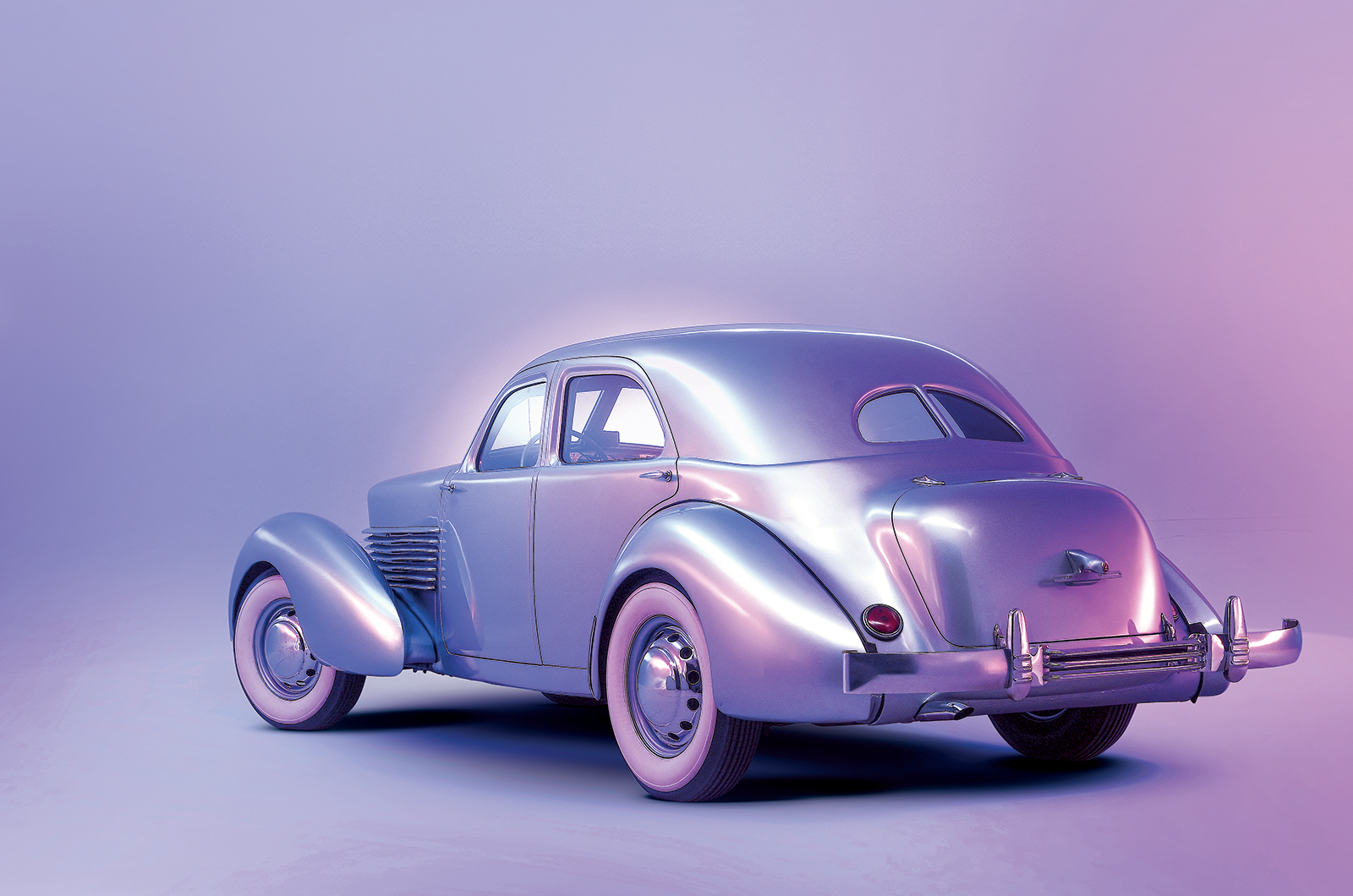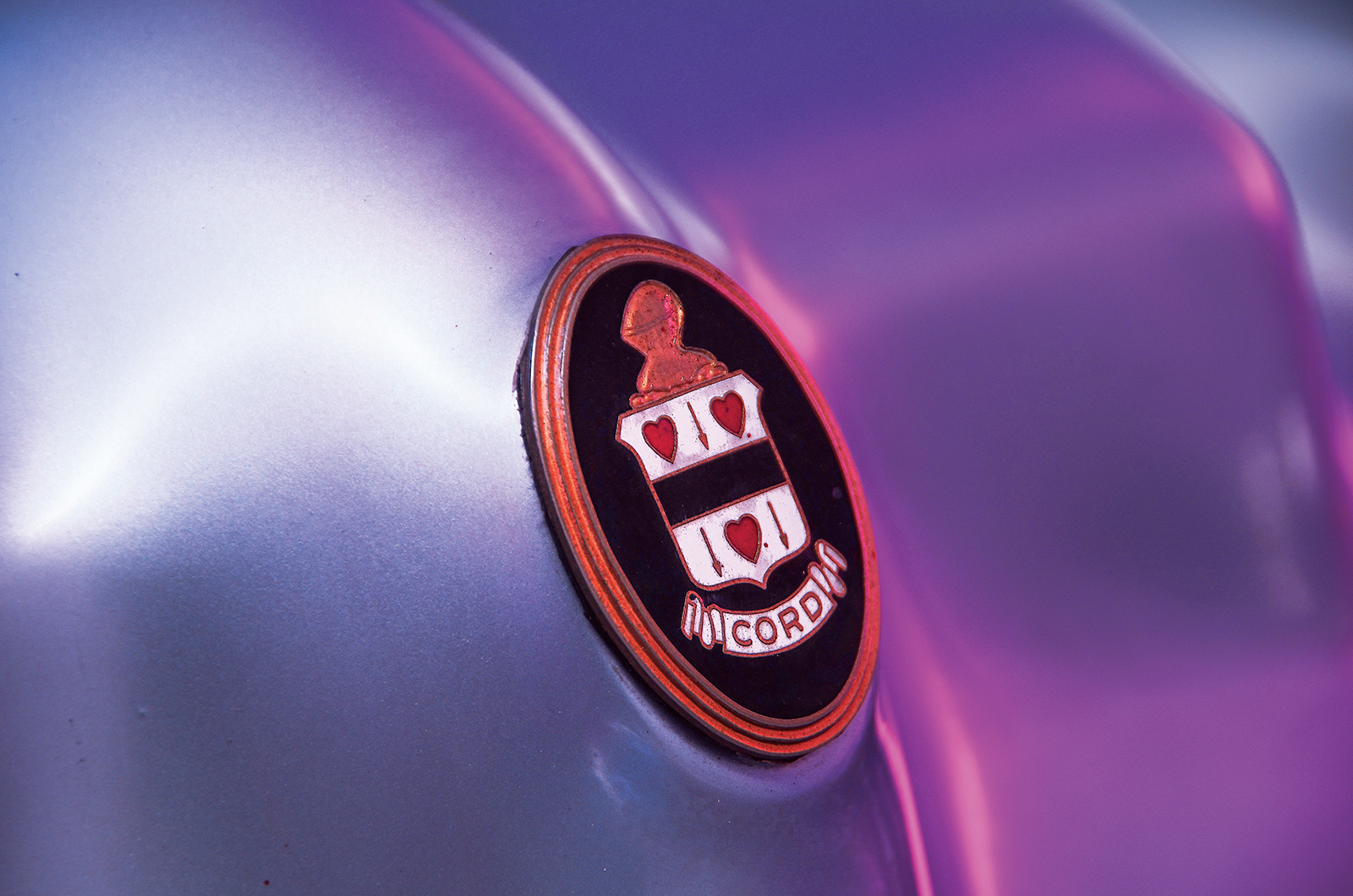Like the spectacular dashboard there is something about the twin sofas, with their fat armrests, that suggests the early days of luxury air travel.
Likewise the split ’screens, which wind open on each side for ventilation and give a slightly beetle-browed view of the world. Fat pillars and the tiny cathedral rear windows are not conducive to all-round vision, either.
The wheel features the industry’s first horn ring, and the various controls for lights in the centre of the dash continue the aviation influence.
The winders for the headlamps live under the dash at each end; turning them anticlockwise raises the pods in about five seconds.
With the ignition on the engine is fired by pressing the clutch to the floor and you can then pull away in first (below reverse) and go straight to second, which engages when you next pump the clutch.
It cannot be rushed, and should never be left in gear in lieu of the handbrake, but it works well as long as you don’t overthink things.
The Cord pulls assertively in these gears with a subdued rumble from the V8, which is not an especially pretty engine but smooth and flexible.
You can leave it in third and keep the overdriven top strictly for open-road cruising, for which there were few opportunities in pre-war Britain.
What must the drivers of Austin Sevens and Morris 8s have made of this gleaming, low-slung glimpse of the future as it flashed past them on the Great North Road?
Even in North America the concreted Interstate system was still in its infancy, but there the Cord can only have excelled, inhabiting a world of stability and sure-footedness that was unknown to most drivers.
The firm ride, somewhat made up for by the lavish seat cushioning, feels natural in a car that has all the instincts of a what we now call a ‘sports saloon’.
It pulls itself neatly and undramatically around corners with little roll, at its best being driven through under power as the firm, positive steering castors back through your fingers.
Wonderful as it is, there’s no mystery as to why the Cord failed. It was simply an advanced but underdeveloped product built for what was already the least forgiving market in the world.
A market where people expected expensive cars to be much larger than the 810/812, and where no amount of beauty, charisma or technical finesse could mend a poor reputation for reliability.
Had the Cord been given time to mature it might have succeeded in a limited way but, against the inexorable rise of the increasingly homogenous American automobiles of the 1940s and ’50s, I doubt it would have lasted for very long without severely compromising the values that made it so special.
Images: John Bradshaw
Thanks to DD Classics
Factfile
Cord 810 Beverly
- Sold/number built 1935-’37/1174 (plus 1146 supercharged 812s)
- Construction unitary steel body with front subframe
- Engine iron-block, alloy-heads, ohv 4729cc Lycoming 90º V8, Stromberg downdraught carburettor
- Max power 125bhp @ 3500rpm
- Max torque 223lb ft @ 1700rpm
- Transmission four-speed semiautomatic, no synchromesh on first, FWD
- Suspension: front independent, by trailing arms, transverse leaf springs rear beam axle with semi-elliptic leaf springs; Lovejoy hydraulic dampers f/r
- Steering worm and roller
- Brakes hydraulic drums
- Length 16ft 3in (4953mm)
- Width 5ft 11in (1803mm)
- Height 5ft (1524mm)
- Wheelbase 10ft 5in (3175mm)
- Weight 3715lb (1685kg)
- 0-60mph 20.1 secs
- Top speed 98mph
- Mpg 15
- Price new $2545 (1937)
- Price now £70,000*
*Price correct at date of original publication
READ MORE
Keeping the faith: restoring a Duesenberg Model SJ
Lancia Astura: Mussolini’s bespoke fastback
Buick’s land yacht: reappraising the ’71-’73 Riviera
Martin Buckley
Senior Contributor, Classic & Sports Car
